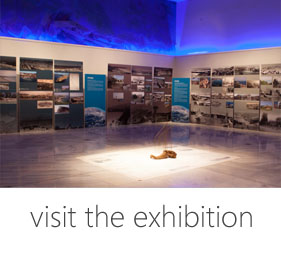Name
MakriCurrent Name
MakriAncient Name
ΗοrthagoreiaMedieval Name
MakriHistory of the name
The earliest reference to Makri comes from the participation of its bishop in the 879 Assembly (Synodos).
Place :
Country
GreeceGeopolitical Unit
ThraceAdministrative subdivision
Prefecture of Evros, Municipality of Alexandroupolis.Location
Makri is located 12 klm. west of Alexandroupolis, on the Thracian coastline of the Aegean.Foudation Date
We are not aware of when the city was founded. However, the name Makri appears in sources since the second half of the 9th century A.C.Current condition
Today, there is a small village and a picturesque little port where the byzantine Makri used to be.History
The area has been residential since the Early Neolithic Age. Researchers are looking for the ancient city of Horthagoreia in the same position. Makri was the seat of the bishopric of the Traianoupolis metropolis from the 9th until the 14th century. In 1205-1206 the city was destroyed by the Bulgarian Tzar Ioannitzis (Kalogiannis or Skylogiannis). However, it continues to exist and have an important financial life.
Since the 14th century it is refered to in naval maps and portolans. In 1361 it is under Ottoman occupation, while in 1433 it is destroyed extensively apart from one part of its fortification.
Description
A bit southern to today's settlement there is a tell in which traces of an important neolithic settlement and historical buildings have been found. The pottery selected during survey of the extended area cover a time period starting from the neolithic ages to the byzantine era.
Even though many early Christian marble architectural parts have been found which witness life in the city, no 5th-6th century buildings have been discovered so far.
In the borders of byzantine settlement which is surrounded by a fortification enclosure, there have been found the remains of a three aisled basilica of the middle byzantine period which served as the episcopal church of the city, as well as traces of two other byzantine churches. This fact proves the importance of the city during the mid-Byzantine era.
Finally, among the findings in the tell, there are three byzantine burials one of which belonged to a little girl who was wearing a glass bracelet and a metal cross on the chest and is dated back to the 10th century.
The fact that there where post-Byzantine baths indicates that the city continued being inhabited in the post-Byzantine era.
Harbor
Today, Makri has a small picturesque harbor. No traces of the byzantine harbor facilities are being saved.
Fortification
The installation of its fortification dates back to 9th or 10th century. It has not been clarified if the settlement or the castle were in use during the post-Byzantine period. In 2009, a part of its byzantine fortification was discovered, south of the church of Agia Anastasia. The part of the wall which was traced was partly destroyed since it was in contact with later constructions.
Medieval Sites
- remnants of the episcopal church
- part of the fortification
- Cyclop's Cave
Textual Sources
• Ακροπολίτης, Georgii Acropolitae Opera, Augustus Heisenberg I-II, Leipzig 1903, σ. 23.
Bibliography
• Ευστρατίου Ν. – Καλλιντζή Ντ., Αρχαιολογικές έρευνες στη Μάκρη Έβρου. Εκτιμήσεις και προβλήματα, ΑΕΜΘ 10β (1996), σ. 873 – 907.
• Ζήκος Ν., Βυζαντινό οδοιπορικό στη Θράκη, Αρχαιολογία 13 (1984), σ. 75 - 76.
• Καλλιντζή Ντ., Ανασκαφική έρευνα στη Μάκρη Έβρου κατά το 1990, ΑΕΜΘ 4 (1990), σ.613 – 624.
• Μπακιρτζης Χ., Βυζαντινή Θράκη, Θράκη, Γενική Γραμματεία Περιφέρειας Ανατ. Μακεδονίας – Θράκης, 1994, σ. 171.
Links
http://www.xanthi.ilsp.gr/cultureportalweb/print.php?article_id=873&lang=gr&print_mode=article
Visual Material
(plans, maps, photos etc from the city and the harbor)


















